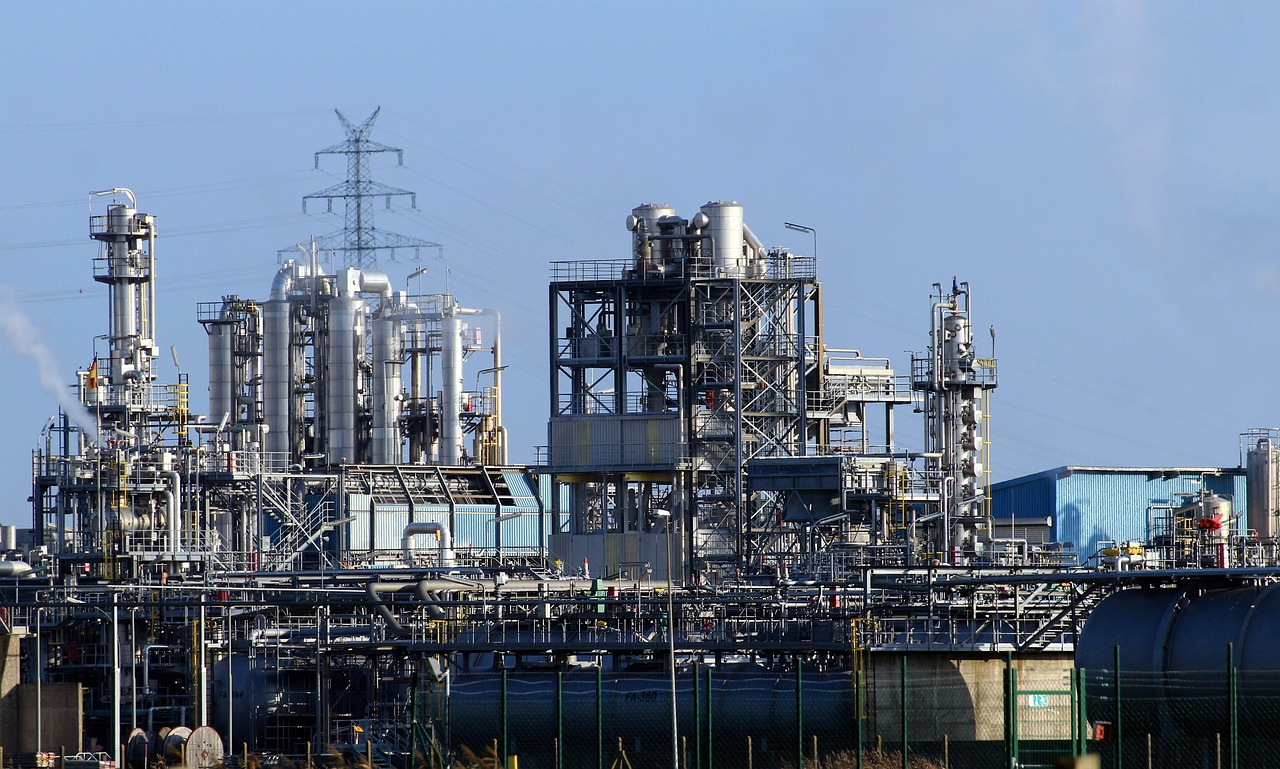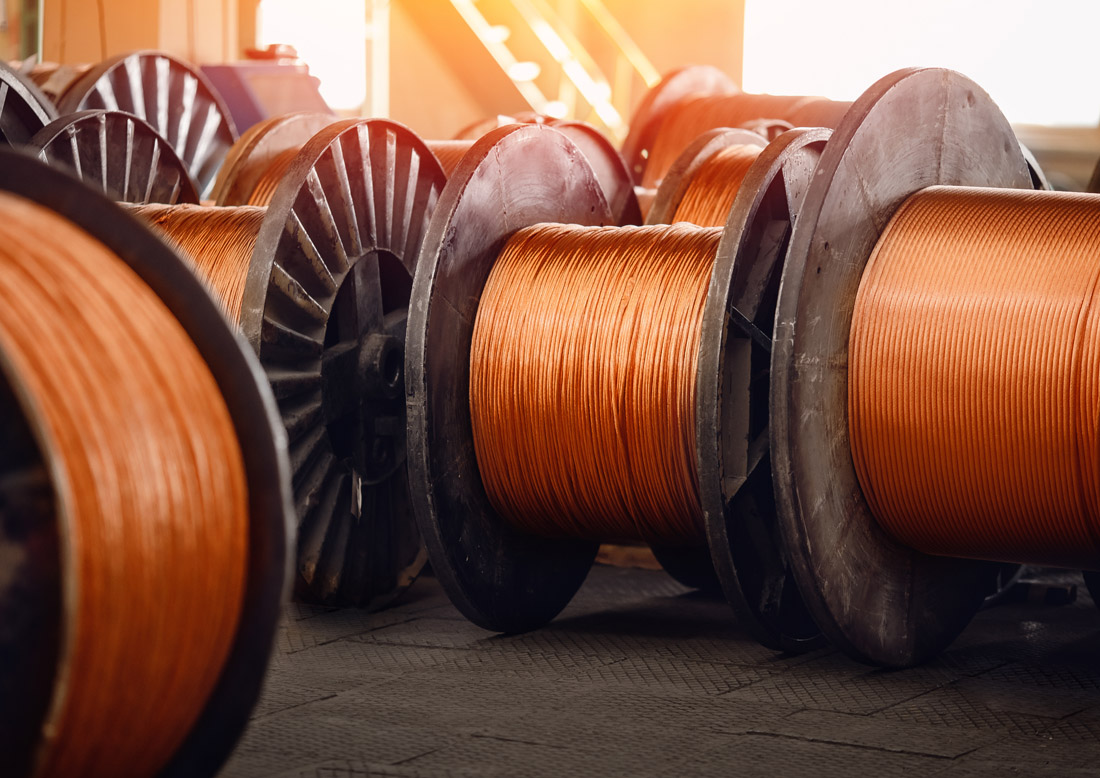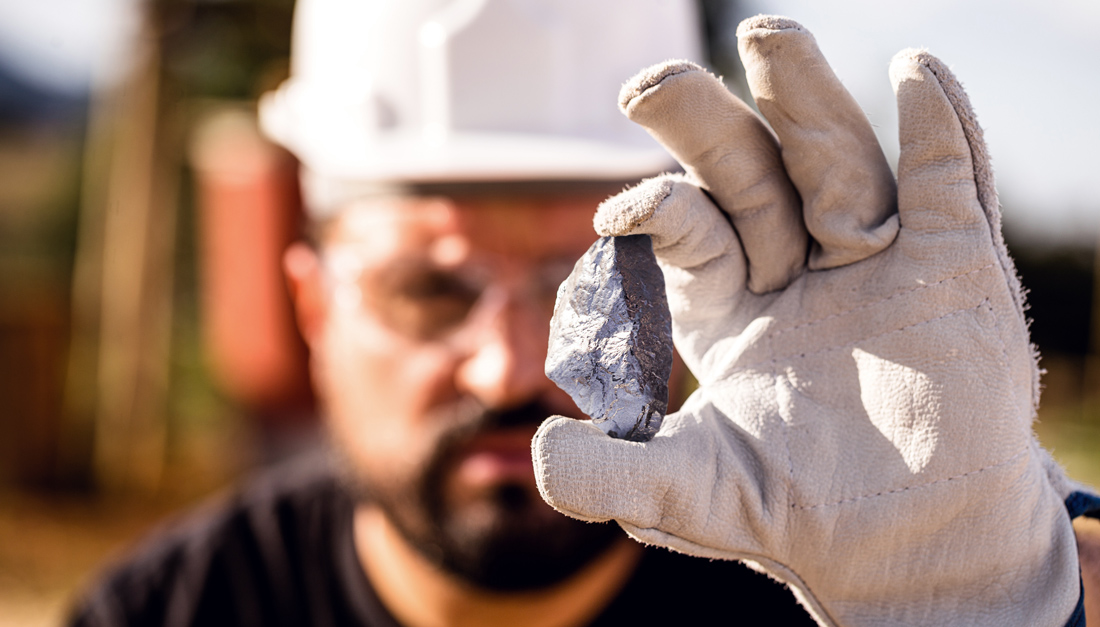Obama Hails Renewable Energy Breakthrough
Source: Marc Davis, BNW News (3/7/11)
"Vanadium is a critical part of the campaign to electrify energy supplies."
U.S. President Barack Obama has championed "multi-megawatt vanadium redox fuel cells" for mass-storage batteries as "one of the coolest things I've ever said out loud."
Speaking to some of America's most illustrious business leaders at a brainstorming forum in Cleveland last month, his light-hearted, upbeat remarks underscored his enthusiasm for clean energy solutions, ones that his administration is committed to supporting.
Powerful vanadium-reliant fuel cells (VRBs) would help achieve his goal, outlined in his most recent State of the Union address, to generate 80% of the nation's electricity from renewable sources by the year 2035.
Other governments and major corporations around the world are also investing vast amounts of money into the electrification of energy supplies, and a critical part of that electrification campaign is vanadium.
Indeed, vanadium has been creating quite a buzz in clean energy circles of late. And that is expected to give a big boost to production of the little-known metal in North America. Currently there are no meaningful suppliers on the continent, although the first vanadium mine is being developed in Nevada by American Vanadium Corp. (TSX.V:AVC) and is expected to come online by the end of next year.
The mining company's much-anticipated output will be a boon to makers of VRBs, as well as electric car manufacturers. Both industries are gearing up to meet a surge in demand, according to industry analysts.
Boxcar-sized VRB batteries will provide grid-level electricity storage and thus are seen as a solution to the most common problem with clean energy production—a lack of ability to store the electricity generated by wind and solar power facilities. Vanadium is also a valuable supercharger for lithium ion batteries used in electric vehicles, which are expected to be produced in the millions by the next decade.
Both types of super-batteries rely heavily on vanadium, which historically has been mostly used in the U.S. as an added alloy to strengthen steel and aluminum. Elsewhere in the world, it is often mined as a by-product of iron ore or uranium mining. But North America's only domestic supplies are extracted from the oil refining process, which is quite expensive to achieve. And it doesn't yield much vanadium.
Jon Hykawy, a clean technology/alternative energy industries analyst for the Toronto-based investment bank, Byron Capital Markets, says that new-age uses for vanadium are about to take center-stage.
Due to vanadium's promising 21st century uses, including beefing-up powerful high-voltage lithium batteries and the mass storage of electricity for power grids, "there's a significant opportunity here to see vanadium demand ramp up," he says.
In particular, automakers want to use the metal to create better electric vehicle batteries that will widely extend an electric car's range and thus conquer one of the largest impediments to the wide-scale adoption by consumers. At the same time, vanadium can cost-effectively supercharge fuel-cell batteries, allowing them to achieve large-scale storage of electricity in VRBs and thus provide uninterrupted solar and wind power to entire cities.
It was those abilities that so excited Obama. However, it has also excited others around the world, especially China, which is working hard on producing its own clean-energy storage cells and electric vehicles, and therefore is expected to create a shortage of this energy-revolutionizing strategic metal.
Hence, looming supply constraints for the U.S. marketplace are a big issue right now. That's because in 2007 (the last year that accurate figures are available), only about 59,100 tonnes of contained vanadium was produced globally, with over 90% of this coming from South Africa, China and Russia.
As a result, it doesn't take a great leap in logic to recognize that with all this interest in vanadium as the clean energy catalyst of the 21st century there will be inevitable shortages down the road. So the hunt is on throughout North America for a secure and steady supply of vanadium, according to Chris and Michael Berry, the publishers of the investment newsletter, www.discoveryinvesting.com.
They point to American Vanadium as the 'go-to' company to begin satisfying North America's burgeoning near-term vanadium needs. The company has three deposits in Nevada but is focusing on the Gibellini project and plans to begin producing by the end of 2012. Going forward, its plans call for production of 14 million pounds of high-purity (and therefore ready-to-use) vanadium pentoxide per year.
"The Gibellini is solidly tracking towards delivery of a feasibility study mid 2011 and production at the end of 2012," says Bill Radvak, President and CEO of American Vanadium. "So we're now focusing on adding a substantial vanadium resource at our other nearby vanadium sites."
Buoyed by the growing demand by clean energy producers for vanadium, Radvak also has his eye on becoming a vertically integrated player in the clean energy market. He ultimately wants to leap from being a miner of vanadium to a maker of vanadium batteries to capture significant value along the different parts of the supply chain.
Above all, American Vanadium has the potential to become a "low-cost producer" and has "good state government support to get that project up and running," according to Hykawy. Both criteria suggest that this upstart company may yet get President Obama's endorsement as another 'cool' catalyst for the green energy revolution.
The principals of www.BNWnews.ca do not directly or indirectly own shares in the companies mentioned in this article.
Speaking to some of America's most illustrious business leaders at a brainstorming forum in Cleveland last month, his light-hearted, upbeat remarks underscored his enthusiasm for clean energy solutions, ones that his administration is committed to supporting.
Powerful vanadium-reliant fuel cells (VRBs) would help achieve his goal, outlined in his most recent State of the Union address, to generate 80% of the nation's electricity from renewable sources by the year 2035.
Other governments and major corporations around the world are also investing vast amounts of money into the electrification of energy supplies, and a critical part of that electrification campaign is vanadium.
Indeed, vanadium has been creating quite a buzz in clean energy circles of late. And that is expected to give a big boost to production of the little-known metal in North America. Currently there are no meaningful suppliers on the continent, although the first vanadium mine is being developed in Nevada by American Vanadium Corp. (TSX.V:AVC) and is expected to come online by the end of next year.
The mining company's much-anticipated output will be a boon to makers of VRBs, as well as electric car manufacturers. Both industries are gearing up to meet a surge in demand, according to industry analysts.
Boxcar-sized VRB batteries will provide grid-level electricity storage and thus are seen as a solution to the most common problem with clean energy production—a lack of ability to store the electricity generated by wind and solar power facilities. Vanadium is also a valuable supercharger for lithium ion batteries used in electric vehicles, which are expected to be produced in the millions by the next decade.
Both types of super-batteries rely heavily on vanadium, which historically has been mostly used in the U.S. as an added alloy to strengthen steel and aluminum. Elsewhere in the world, it is often mined as a by-product of iron ore or uranium mining. But North America's only domestic supplies are extracted from the oil refining process, which is quite expensive to achieve. And it doesn't yield much vanadium.
Jon Hykawy, a clean technology/alternative energy industries analyst for the Toronto-based investment bank, Byron Capital Markets, says that new-age uses for vanadium are about to take center-stage.
Due to vanadium's promising 21st century uses, including beefing-up powerful high-voltage lithium batteries and the mass storage of electricity for power grids, "there's a significant opportunity here to see vanadium demand ramp up," he says.
In particular, automakers want to use the metal to create better electric vehicle batteries that will widely extend an electric car's range and thus conquer one of the largest impediments to the wide-scale adoption by consumers. At the same time, vanadium can cost-effectively supercharge fuel-cell batteries, allowing them to achieve large-scale storage of electricity in VRBs and thus provide uninterrupted solar and wind power to entire cities.
It was those abilities that so excited Obama. However, it has also excited others around the world, especially China, which is working hard on producing its own clean-energy storage cells and electric vehicles, and therefore is expected to create a shortage of this energy-revolutionizing strategic metal.
Hence, looming supply constraints for the U.S. marketplace are a big issue right now. That's because in 2007 (the last year that accurate figures are available), only about 59,100 tonnes of contained vanadium was produced globally, with over 90% of this coming from South Africa, China and Russia.
As a result, it doesn't take a great leap in logic to recognize that with all this interest in vanadium as the clean energy catalyst of the 21st century there will be inevitable shortages down the road. So the hunt is on throughout North America for a secure and steady supply of vanadium, according to Chris and Michael Berry, the publishers of the investment newsletter, www.discoveryinvesting.com.
They point to American Vanadium as the 'go-to' company to begin satisfying North America's burgeoning near-term vanadium needs. The company has three deposits in Nevada but is focusing on the Gibellini project and plans to begin producing by the end of 2012. Going forward, its plans call for production of 14 million pounds of high-purity (and therefore ready-to-use) vanadium pentoxide per year.
"The Gibellini is solidly tracking towards delivery of a feasibility study mid 2011 and production at the end of 2012," says Bill Radvak, President and CEO of American Vanadium. "So we're now focusing on adding a substantial vanadium resource at our other nearby vanadium sites."
Buoyed by the growing demand by clean energy producers for vanadium, Radvak also has his eye on becoming a vertically integrated player in the clean energy market. He ultimately wants to leap from being a miner of vanadium to a maker of vanadium batteries to capture significant value along the different parts of the supply chain.
Above all, American Vanadium has the potential to become a "low-cost producer" and has "good state government support to get that project up and running," according to Hykawy. Both criteria suggest that this upstart company may yet get President Obama's endorsement as another 'cool' catalyst for the green energy revolution.
The principals of www.BNWnews.ca do not directly or indirectly own shares in the companies mentioned in this article.



































